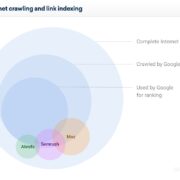There can be many reasons why software is not used once it has been introduced. You can ensure that this is not the case in your company.
No successful athlete gets a “train-the-trainer” course of eight or maybe 16 hours when he starts to learn a new piece of sports equipment or a new discipline for the first time. And no musician will learn an instrument with the “train-the-trainer” method in the same amount of time.
How are software products ideally trained today?
Photo: liravega – shutterstock.com
More time is spent in the key users when introducing new ones softwarebut unfortunately rarely invested. After that, the key user is on his own and should often use this basic knowledge to introduce his colleagues to the matter. That this is not enough is obvious and can lead to employees not using the software after such a short training session.
It may well happen that a medium-sized company – with a TCO consideration – invests 750,000 euros in an ERP or 250,000 euros in a CRM solution. But if only 4,000 to 6,000 euros of this is invested in the “train-the-trainer” concept, the company will save at the wrong end.
The reasons why savings are made on training courses can be:
- The software company does not want to unnecessarily increase its offer price for the product.
- The decision maker wants to keep the investment as low as possible. Therefore the training costs are reduced to a minimum.
This is ideally how software products are trained
For the implementation of new softwarethe company should create a continuous training plan. This should be individually tailored to: the skills, the level of performance and the potential of the person / s to be trained or the processes in which the software is integrated.
As is known, targeted training stimuli lead to learning success. The step-by-step introduction to the new software and independent testing with expert supervision makes it easier to get to know each other. However, every workout also makes you tired and at some point your capacity is exhausted.
However, a didactically sensible training with exercises to be carried out independently can lead to the employee feeling the desire to continue and to familiarize himself more deeply with the software . This can be, for example, use cases from your own work area. So that the employee has the opportunity to become familiar with the newsoftware empathize, try it out and befriend it – a relationship develops.
Win in a team
In a sports team, not everyone trains alone and not everyone trains according to the same plan. There are slower players who need to be trained to be quick. The less agile need more stretching and coordination skills. Accordingly, every employee should receive special training in his or her special position.
Tip: Don’t just strengthen the weak. The goal must be to increase the overall performance average.
Imagine the processes in the company as moves in ball sports. These only work smoothly if everyone has the same understanding of the processes and everyone knows the pass variants and routes of the other players.
This gives the processes more security, the employees generate better expertise, they have more fun and everyone feels like they have been involved. None of the particularly good “players” blaspheme that they have to pull the weaker ones along.
Nice side effect: The team spirit also improves. In the best case scenario, everyone works towards a common goal: with the help of the new onesoftwareimprove the company’s bottom line. The company can only benefit if all users have a sense of achievement with the new software.
E-learning in job and talent management
Companies have to break new ground in talent management and invest more in the further training of their employees. According to the experts at Right Management, the following tips on the subject of e-learning can help set the course in terms of skills and training and make learning attractive.
Conclusion: The training of the trainer and the continuous training of the user should be an absolute focus when introducing software.
The project training concept
The training outlined below is not designed for the short term, but for a longer and sustainable period of between one and two years. As in sports or music, it is refreshed again and again and adapted to the level of performance or goals.
- Needs analysis
- Which technical, personal and IT skills does the employee / team need?
- Which processes have to be trained with priority 1?
- Define training
- goals What do individual goals look like for the employee / the team / the department or the process?
- Define training controls
- What are the milestones in this training program?
- Training Controlling
- Who checks when and how the learning or training progress?
- Training programs
- What are the basic training courses for individual employees / teams and special key users?
- How often is there repetition?
- Special
- training courses or modules Who gets special / additional training units?
- Quality assurance
- Feedback and the observations of the trainings provide new insights.
- The training plan is continuously adapted and documented.
Tip: Don’t forget to celebrate reaching a special training goal!
What are the benefits of high training costs for the company?
Additional training costs when introducing new software can pay for themselves after a short time. The reasons for this can be varied:
- Joint training improves the understanding of processes, making them faster, more effective and more economical;
- Processes are questioned and improved;
- the system is used more efficiently when relationships are known or the functionality has been trained;
- There is no silo thinking;
- smooth processes increase customer satisfaction and customer loyalty;
- the economic goals are achieved more easily and quickly.
Final tip for the boss: Have the courage to relieve your employees before introducing software and free them from unimportant and unnecessary tasks. It is easier to train without ballast.
Interesting Articles:






















Comments